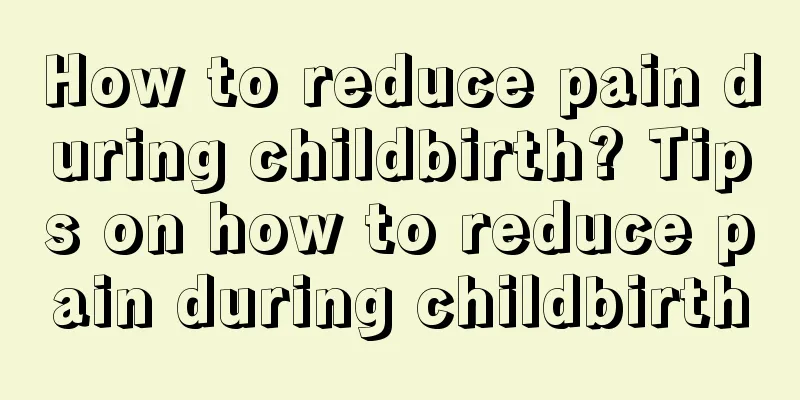What should newborns wear in winter? How should newborns dress in winter?

|
In winter, many parents think that the weather is too cold and the baby will be frozen, so they dress the baby very tightly. In fact, this practice is wrong. So, how should the baby dress in winter? How to wrap a newborn baby in winter1. Spread the blanket on a flat surface and fold down the upper right corner about 15 cm. 2. Place your baby on his back on the blanket with his head resting on the folded position. 3. Pull up the corner of the blanket close to the baby's left hand to cover the baby's body, and tuck the corner behind the baby's body from under the baby's right arm. 4. Fold the lower corner of the blanket (towards the baby's feet) to cover the baby's chin. 5. Pull the corner of the baby's right arm to the left side of the body and tuck it under the body from the left side. Some babies like to be able to move their arms freely, so you can only wrap the baby's body below the arms so that he can move his hands and fingers. How to dress your baby properlyThere are two purposes for humans to wear clothes: one is to cover the body, and the other is to keep warm. When the temperature is high enough, above 24℃, there is no need to keep warm when awake, and a single piece of clothing is enough to cover the body. The same is true for children. Infants and young children cannot speak for themselves, so we can refer to a more practical principle: 1. Children under one year old should wear one more piece of clothing (of average thickness) than adults. 2. For infants and children over one year old, their ability to regulate body temperature is basically the same as that of adults, so they can be dressed like adults. 3. Many children over three years old can express themselves whether they are cold or warm. As long as the child does not feel cold, there is no need to wear more clothes. You can touch the palms and back of the child. If they are warm and do not sweat, it means the clothes are suitable. The more clothes a baby wears, the better. Pediatricians never advocate that babies wear too many clothes, which will lead to a decrease in resistance. Children's metabolism is naturally more vigorous, and too many clothes will make children sweat more easily, making them prone to skin diseases such as prickly heat and folliculitis. If you put on too many clothes, children who like to move around will not want to move. First, it is inconvenient for them to move, and second, they will sweat when they move. Thick clothes cannot dissipate heat, and they have to cover the sweaty clothes to dry themselves. If the wind blows accidentally, the baby will easily catch a cold. Therefore, wearing too many clothes not only cannot prevent colds, but often has the opposite effect. How to wear it specifically, give you some practical dressing suggestionsAt home: Cotton underwear + thermal vest + wool sweaterWinter in the south is quite cold, and the indoor temperature is basically around 15 degrees. A cotton-wool base layer plus a thermal vest, and an open-front or pullover sweater as an outer layer allow the baby to move freely without losing warmth. A thermal vest is absolutely a must-have item for babies in winter, protecting the back, abdomen, shoulders and other parts that are easily affected by cold. You must have several pieces for inner and outer wear. If you have a heater at home, you are so lucky, just do some subtraction. ▲Pure cotton underwear worn next to the body must be pure cotton and single-layer. Do not choose quilted thermal underwear. Quilted fillings are all artificial fibers, which are not conducive to sweat absorption and perspiration. Babies under six months old are suitable for jumpsuits, and babies over six months old are more convenient to wear separate underwear. ▲The inner cotton vest is worn between the underwear and the sweater. ▲Thicker sweaters or woolen sweaters are suitable for winter. Low round necklines with shoulder buttons are suitable for children under 18 months old, but high necklines are not suitable. Going out: Based on your dressing plan at home, you only need to add a cotton jacket when going out.The thickness of the cotton jacket you wear when going out depends on the outdoor temperature, and it needs to provide both heat preservation and windproof effects. If you have to go out when the temperature is below 5 degrees, you need a thick down jacket with a hood; if the temperature is 5-10 degrees, you can choose a cotton jacket of normal thickness; if the temperature is 10-15 degrees, a fleece jacket is enough, or pure cotton underwear + thick wool sweater + cotton vest for outer wear. ▲Be sure to prepare a thick down jacket to wear on particularly cold days. ▲ Fleece jackets and woolen coats are for the less cold winter days. As mentioned before, vests are good products. It is worth preparing a few of them, both for inner wear and outer wear. Wearing a cotton vest as an outer layer can show a sense of layering. Pair it with a scarf or a hat, and don't be too trendy. What to wear when sleepingSleeping bags are definitely the best choice for babies to sleep. Sleeping bags are safer than quilts, and are not easy to cover the baby's mouth and nose; they are not easy to be kicked away, and both babies and adults can sleep soundly. When the weather just turns cold, I recommend gauze sleeping. If you turn on the heating at home in this weather, you can choose a not-so-thick autumn and winter pure cotton sleeping bag; but if you don't use heating at home, you may need to change the baby to a thicker quilt sleeping bag. Editor's reminderDon't let your baby wear chemical fiber clothes: because the skin is in a state of convergence when it is cold, most of the blood is stored in the muscle tissue deep in the skin, and the sweat glands secrete less, so the skin is dry. Chemical fiber clothes are prone to static electricity, which will aggravate the dryness and opacity of the skin. It is best not to let your baby wear turtleneck sweaters or fleece clothes: although they can resist the cold, they are easy to cause neck itching and hives. Don't let babies with skin allergies wear down cotton clothes: because it can induce rashes on the skin all over the body and bronchial spasms. "No. 5 Parenting" (:yuer5h) |
<<: Who determines the IQ of the fetus? What does the IQ of the fetus relate to?
Recommend
Does painless childbirth hurt? Does painless childbirth have any effect on the baby?
The popularity of painless childbirth in my count...
What is the cause of the small pimple on the baby's eyelid?
In our daily life, people often suddenly develop ...
Can hawthorn reduce milk production? How much hawthorn should I eat to reduce milk production?
Hawthorn is rich in vitamins and has a very good ...
How to prevent baby's indigestion? How to treat baby's indigestion?
The baby's digestive problems are very import...
Children's interpersonal relationships start with learning to respect each other
Maintaining good interpersonal relationships is a...
Do pregnant women have to use special toothpaste? The difference between pregnant women's toothpaste and ordinary toothpaste
Pregnant women need to pay attention to a lot whe...
Changes in baby's stool after adding complementary food What to do if baby does not defecate after adding complementary food
When babies grow to a certain age, mothers usuall...
Can I wash my hair during the dog days of summer? How long can I wash my hair during the dog days of summer?
Women who have confinement during the dog days of...
Why do children like to sleep on their stomachs? Why do children always like to sleep on their stomachs?
Friends who have children around them must know a...
What should pregnant women do if they have spleen and stomach deficiency? Does spleen and stomach deficiency in pregnant women affect the fetus?
It is very important for pregnant women to be in ...
What to wear during the confinement period in March? What to wear during the confinement period in March?
Postpartum women are weak and need to go through ...
How to take care of the baby in autumn? What should you pay attention to in autumn?
How should mothers take care of themselves during...
How to choose a baby stroller? What are the good brands of baby strollers?
There is one thing that every family with a baby ...
When will the baby's anterior fontanelle close? When will the baby's anterior fontanelle close?
Every step of the baby's growth concerns pare...
What is the difference between baby spitting up and vomiting? How to tell whether the baby is spitting up or vomiting?
What is the difference between baby spitting up a...









